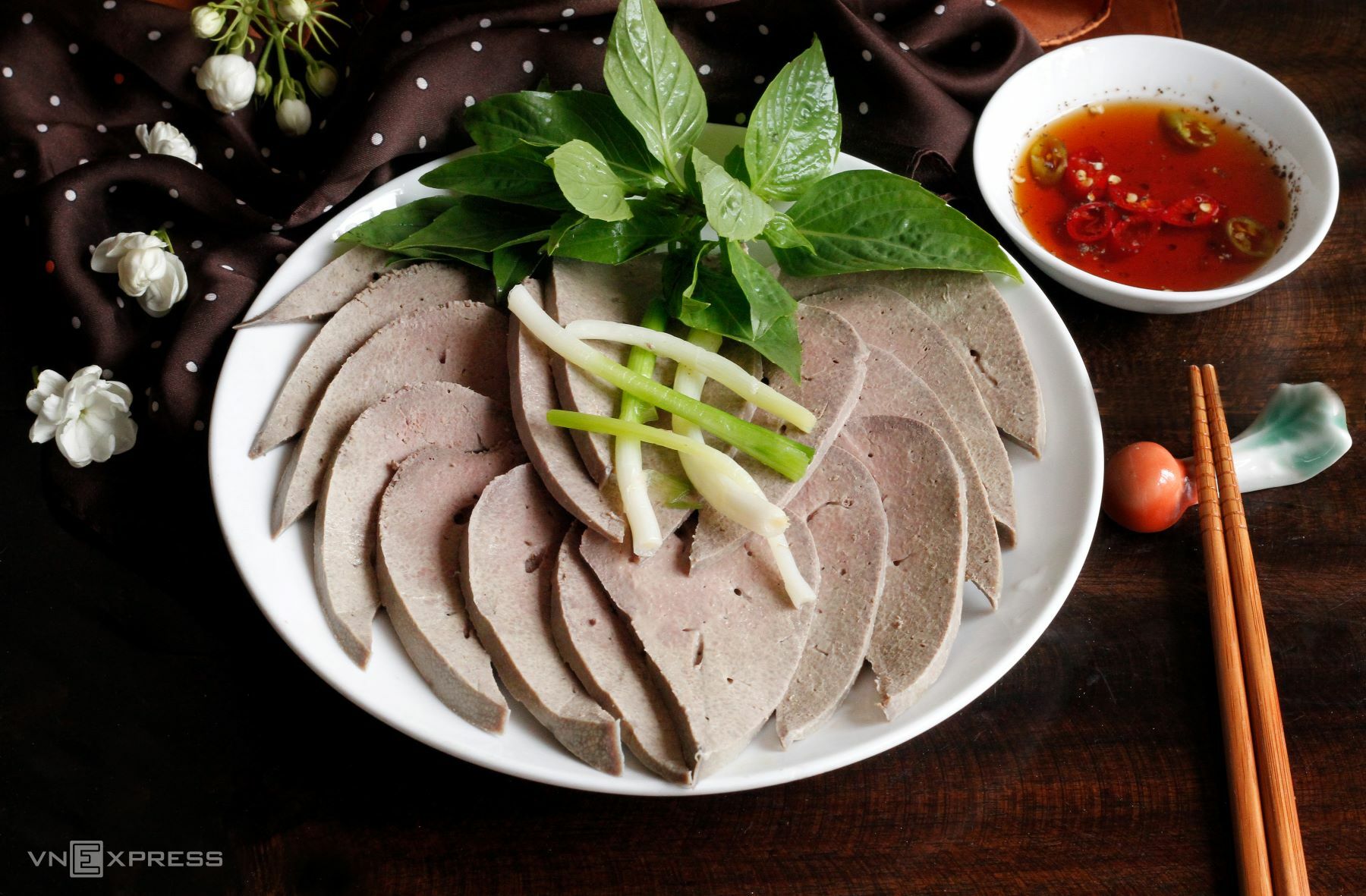The main cause of the liver's pungent smell is sulfur-containing compounds (hydrogen sulfide, methanethiol), especially trimethylamine (TMA) and some amino acids. These compounds are usually found in small sacs inside liver cells.
According to folk experience, there are many ways to deodorize liver, such as soaking it in ash water or fermented rice bran. Vietnamese home cooks often soak the liver in unsweetened fresh milk for about 15-20 minutes. The protein and lactose in the milk help absorb the odor-causing compounds and make the liver color more even and brighter. Some people soak it in diluted salt water mixed with a little white wine and crushed ginger.
Modern chefs use the "heat shock" method by dipping the liver in a bowl of 60-degree Celsius hot water for 30 seconds, then soaking it in a bowl of ice water. Repeat twice, then remove, dry, and let it rest for a few minutes before using it in various dishes like boiling, stir-frying, or braising.
This technique is based on the principle that when the liver is exposed to 60 degrees Celsius, the protein retains its structure and does not completely coagulate, however, the liver cells expand. Then, a sudden cold soak causes the cells to contract sharply, creating an effect like a gentle squeeze, helping to pump out the odor-causing compounds.
 |
Perfectly boiled liver is soft pink and fragrant. Photo: Bui Thuy |
How to boil liver until tender, pink, and not tough.
For a delicious boiled liver dish, choose fresh liver with signs such as a natural, even, pink or bright red color. The liver surface should be smooth, dry, and not wet or have any liquid, feeling fresh and firm. Avoid buying liver that is dark, bruised, or yellowish, as this indicates old liver or a sick pig. Cut the purchased liver into even pieces, then soak in fresh milk or heat shock as above to remove the pungent smell.
Boiling the liver: Boil a pot of water (enough to cover the liver), add a little salt and crushed ginger and dried onions. Add the liver to boil, when the water boils again, skim off the foam and reduce the heat to a simmer. The trick of adding a little salt to the boiling water not only helps the liver taste better but also keeps its color bright, limiting oxidation, which causes the liver to darken.
Depending on the size of the liver pieces, the boiling time is 15-20 minutes. When pierced, if light pink juice flows out, the liver is cooked. Turn off the heat, let it sit for a few minutes, then remove and soak in a bowl of cooled boiled water or clean filtered water that covers the surface, adding a few lemon slices (optional). Liver and pig intestines, after boiling, should be soaked in water to prevent them from darkening and becoming tough.
When eating, take the liver out, thinly slice it, and dip it in whipped shrimp paste with lemon, white wine, and sugar, or peppercorn fish sauce. For a more elaborate dip, combine fish sauce, pepper, chili powder, sliced shallots, fresh chilies, sugar, chopped cilantro, and garlic vinegar for a delicious flavor.
Properly cooked liver is soft, moist, pinkish-white, fatty, and fragrant without being tough or pungent.
Liver is rich in iron, vitamin A, and protein, but eating too much can lead to excess cholesterol or vitamin A, especially in young children and pregnant women. It's best to eat it only once or twice a week, 50-70g each time. When eating liver, combine it with cooling vegetables like jute leaf soup, boiled turnips, or mung bean porridge to balance the liver's heat, aid digestion, and prevent internal heat.
Many people have prejudices against animal liver, believing it will introduce toxins into the body. However, according to nutritionists and studies, liver is rich in iron, vitamin A, and protein. Choosing fresh liver and consuming it appropriately is good for health.
Liver can be prepared in many delicious dishes such as boiled liver, stir-fried liver, braised liver, coconut milk liver stew, and grilled liver. Note that you should not stir-fry liver with bean sprouts because bean sprouts contain a lot of vitamin C. Stir-frying or eating pig liver with bean sprouts at the same time will oxidize the vitamin C, leaving the dish without nutrients.
This organ is high in fat and cholesterol, so the elderly, people with metabolic disorders, hypertension, gout, etc., should not eat it in large quantities.
Bui Thuy












